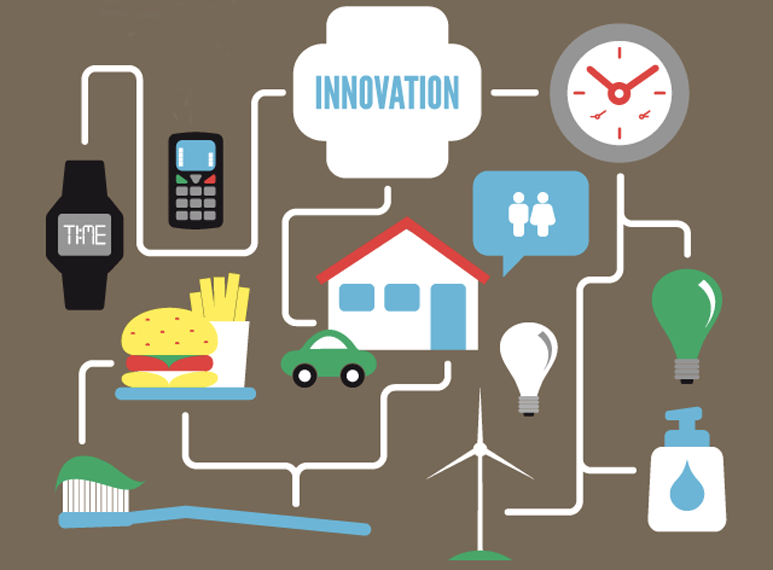Did you know that the UK has an innovation foundation? And that innovation foundation is driving innovation around the world? The organisation’s name is Nesta and it is an independent charity to help both people and organisations to “bring great ideas to life”. The organisation achieves this by providing grants, investments, networks, skills and by helping to get research underway. In particular, the public sector needs a shake up for innovation to occur. It is critical for all governments everywhere to be able to innovate in order to succeed. As Geoff Mulgan, the Chief Executive of Nesta explains:
“In much of the world public sector innovation continue to be organised haphazardly with disparate short term incentives and the odd consultancy report or conference rather than focused effort.”
And this is what Nesta is setting out to change with its idea of i-teams. Nesta has an objective of learning from excellent new practices being developed by governments at all levels around the world to help to be able to guide political leaders and executives with innovating more successfully and consistently.
What are i-teams ?
The i-teams are units and funds that are set up by governments to make innovation occur. They look at both incremental change and radical transformation. Nesta has found such teams to generally fall into four categories. One is those that create solutions to solve specific challenges. A second is teams that work on engaging citizens, non-profits and businesses to find new ideas. The third is those that try to transform the processes, skills and culture of government. And the fourth is teams that look to drive wider policy and systems change. Many i-teams work across more than one of these categories.
From studying i-teams, Nesta defines some clear lessons that have been learned for other governments or organisations that want to set up their own i-team. One recommendation is that the i-team needs to be driven by the goal of the entity that created it. The team needs to have links with power inside government and the ability to leverage partnerships, resources and insights to achieve goals. A third is to build a team that has a great array of skills and abilities and that is comprised of those both inside and outside of government. A fourth recommendation is making sure the funding model is lean and looking to get funds from partners in order to implement ideas. A fifth recommendation is to demonstrate and communicate the i-team’s value continually. Another recommendation focuses on using cutting edge innovation, skills and tools and using good project management techniques to get things done. There is also a need to focus on action and early experimentation to see what will work, and learn or move on quickly. An eighth recommendation is to be clear about handovers and how delivery to government will work. The penultimate recommendation is to make sure to measure and quantify successes, and to not continue with things that clearly aren’t working. No list of recommendations would be complete without number 10 – to celebrate success and share credit.
i-teams that Nesta reports on are based all over the world. In the Americas there are activities in Washington DC, Boston, New York City, New Orleans and Mexico City. In Europe teams are found in London, Stockholm, Helsinki, Paris and Copenhagen as well as Barcelona. Pretoria in South Africa also has an i-team. Meanwhile in Asia teams can be found in Seoul, Kuala Lumpar and Singapore, and in Australia, in Adelaide.
Image Source: Nesta report i-teams: The teams and funds making innovation happen in governments around the worldHoning in on just one example of an i-team, the fascinating work of i-teams can be better understood. In Barcelona, a small i-team of just three people is an “Urban Lab”. The team was launched in 2008, and has a remit to facilitate the use of public spaces in the city of Barcelona to carry out tests and pilot programmes on products and services with an urban impact. It is explained that the concept is to use the city as an urban laboratory. The team works with businesses to design and launch prototypes. The following video explains further what is the Barcelona Urban Lab:
To date, the team has worked with the city government to support 16 pilots and many of these have become businesses in Barcelona and in other cities. For example, one project called Urbiotica has experimented with sensors with a goal of measuring waste levels in public bins. The goal of this has been to understand how to make waste collection more efficient. In the next article in this series we will explore what other i-teams have been doing.
Making Innovation Happen Around the World Part 2

Paula Newton is a business writer, editor and management consultant with extensive experience writing and consulting for both start-ups and long established companies. She has ten years management and leadership experience gained at BSkyB in London and Viva Travel Guides in Quito, Ecuador, giving her a depth of insight into innovation in international business. With an MBA from the University of Hull and many years of experience running her own business consultancy, Paula’s background allows her to connect with a diverse range of clients, including cutting edge technology and web-based start-ups but also multinationals in need of assistance. Paula has played a defining role in shaping organizational strategy for a wide range of different organizations, including for-profit, NGOs and charities. Paula has also served on the Board of Directors for the South American Explorers Club in Quito, Ecuador.



























